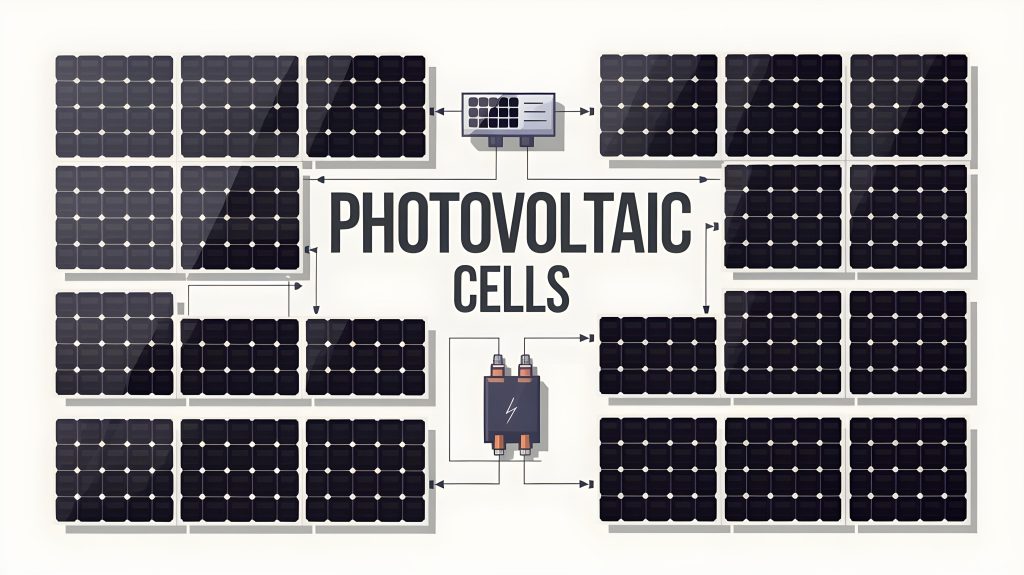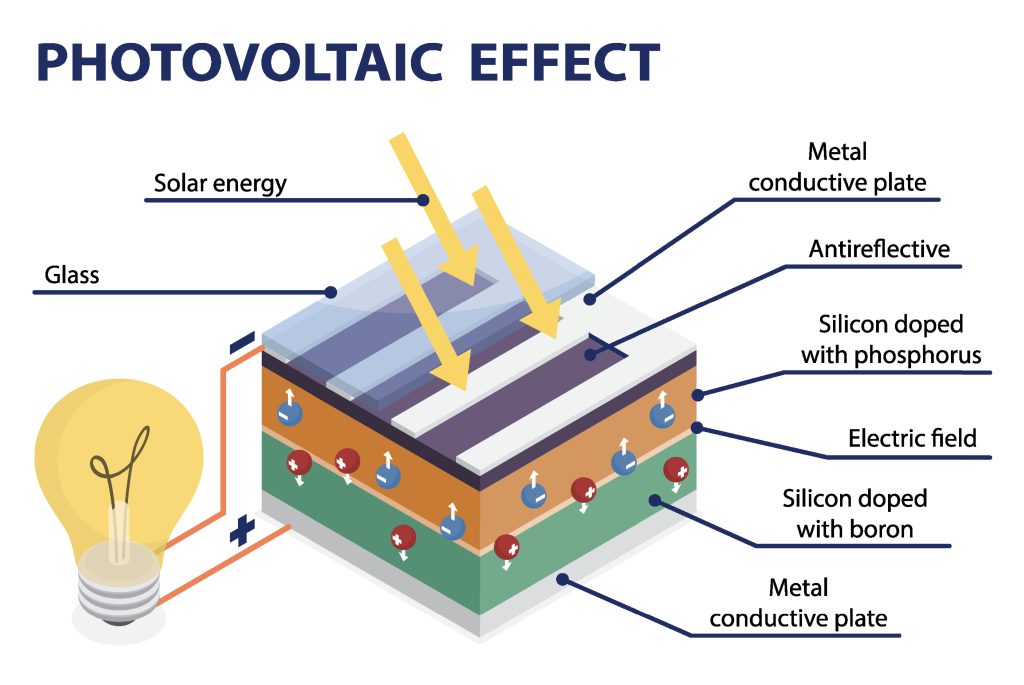 How Do Photovoltaic (PV) Panels Work?
How Do Photovoltaic (PV) Panels Work?
Have you ever seen those sleek solar panels on your neighbor’s roof and wondered how they actually generate power? With a properly installed system, they work reliably—and here’s how solar panels transform sunlight into electricity.
Step 1: Sunlight and Photons
The sun emits billions of tiny light particles called photons every second. Traveling at roughly 186,000 miles per second (Space.com, 2024), these photons reach Earth and collide with various surfaces.
When they strike a solar panel, they enter the photovoltaic (PV) cells and dislodge electrons, beginning the process of electricity production (U.S. Energy Information Administration [EIA], n.d.).
Step 2: Silicon Semiconductors
Each PV cell contains silicon, a semiconductor material that sits between a positively charged (p-type) layer and a negatively charged (n-type) layer. The n-type layer is formed by silicon doped with phosphorus, meaning that trace amounts of phosphorus atoms are added to the silicon crystal lattice to create extra free electrons for conduction (U.S. Department of Energy [DOE], n.d.).
Similarly, the p-type layer is formed by silicon doped with boron, where boron atoms introduce “holes” – or spaces that act like positive charge carriers – into the lattice (DOE, n.d.). When photons hit the silicon, they energize electrons, enabling them to jump from the p-type layer to the n-type layer. This movement establishes an electric field within the cell (DOE, n.d.).
Step 3: Direct Current Flow
Once freed, the energized electrons travel through metal conductors—much like cars on a highway—creating a flow of electric charge. This flow is known as direct current (DC), which by itself isn’t compatible with most home appliances.
Step 4: Converting DC to AC with the Sol-Ark 15K Inverter
Homes and the electrical grid use alternating current (AC). The Sol-Ark® 15K hybrid inverter “translates” the DC output of your panels into AC power. Beyond basic conversion, it optimizes each watt for voltage stability and safety, ensuring your appliances run smoothly.
Step 5: Power Distribution and Grid Interaction
After conversion, AC electricity feeds your home’s circuits. If your system produces more power than you use, you can often export surplus energy back to the grid. With utility approval, those exported kilowatt-hours typically earn you a credit on future bills.
Step 6: Efficiency and Maintenance
No solar panel is 100% efficient—most commercially available panels convert only 15–22% of incoming sunlight into electricity (GreenMatch, 2025). The remainder is lost as heat or reflected light. Keeping panels clean and clear of debris (dust, leaves, bird droppings, or snow) helps maintain optimal performance. Panel-level power optimizers can mitigate shading effects, but regular cleaning remains essential.
The Quick Version: Solar Panels in 30-Seconds
-
- Photons from the sun knock electrons free in silicon cells (EIA, n.d.).
- Freed electrons create a DC current.
- The Sol-Ark 15K inverter converts DC into usable AC.
- AC powers your home or is sent back to the grid.
- Panel efficiency ranges from 15–22%, so maintenance is key (GreenMatch, 2025).
Solar panels demonstrate how science and engineering can harness nature’s most abundant resource—sunlight—to power our lives, from smartphone charging to air-conditioned comfort.
References
GreenMatch. (2025, March). How efficient are solar panels in May 2025? GreenMatch. https://www.greenmatch.co.uk/blog/2014/11/how-efficient-are-solar-panels
Space.com. (2024). How fast does light travel? Space.com. https://www.space.com/15830-light-speed.html
U.S. Department of Energy. (n.d.). Solar photovoltaic technology basics. https://www.energy.gov/eere/solar/solar-photovoltaic-technology-basics
U.S. Energy Information Administration. (n.d.). Photovoltaics and electricity. https://www.eia.gov/energyexplained/solar/photovoltaics-and-electricity.php

 How Do Photovoltaic (PV) Panels Work?
How Do Photovoltaic (PV) Panels Work?